A couple of months ago, I started the “Unboxed” topic as a planned recurring feature where I would pull some of the DVD, Blu-ray and even Laserdisc box sets that I’ve collected over the years off the shelf and take a look at their contents. I started with the ‘Kill Bill’ DVDs from Japan. While that was a lot of fun, I just haven’t had much time to take the necessary photos of my other collectibles until now. Today, we’ll examine Disney’s swanky ‘Aladdin’ Laserdisc box set from Japan.
Before I get to the photos, I have a quick story about the ordeal it took to acquire this box set in the first place. Back in the day, I used to post regularly to the alt.video.laserdisc USENET newsgroup. Before eBay, this was a good place for collectors to buy and sell Laserdiscs from one another, and was practically the only way to find rare titles (especially rare imports). I’d been on the lookout for a copy of the ‘Aladdin’ box set for a while when I finally spotted a “For Sale” post that caught my attention.
The seller went by the name of Dale. I contacted him by email, and we negotiated a price and shipping arrangements. I sent him a check the very next day. (Remember, this was long before PayPal.) Everything seemed to be fine until about a week later when Dale suddenly sent me a message saying that he couldn’t sell me the disc because I never confirmed my mailing address with him. That was an outright lie, as I had sent him my address and he had responded to that email. I pointed out the error to Dale and asked him to honor the terms of our agreement. It turns out that, in the meantime, someone else had posted a “Wanted to Buy” message on the same newsgroup asking for that particular disc and Dale, sensing that he could make a better deal for himself, offered the disc to that person for more money than he had already accepted from me. I confirmed this with the person who posted that second message. When I confronted Dale about this, he became very evasive and promptly cut off contact with me. I was forced to place a stop-payment on the check (at a $20 fee from my bank!). Fortunately, I eventually found another source for the box set, but the bad taste of this transaction still rankles me to this day. I think about it every time I look at the box set.
Was the Laserdisc worth the hassle to obtain? I think it’s a pretty handsome package. Click on any of these photos to enlarge.
The box contains three Laserdiscs. Each of the discs comes in its own sleeve. The movie is encoded in CAV format and spread to four sides across the first two discs. (The CAV format only allowed 30 minutes per side.) Here are the two movie discs, and the obi-strip that goes around the outside of the box:
Unlike the domestic Laserdisc edition, which included only one theatrical trailer for an extra, the Japanese release has two trailers, a music video and a dubbed clip of one of the songs on Side 4 after the end of the movie. Disc 3 contains a 30-minute featurette called ‘The Making of Aladdin: A Whole New World’. Also included in the box is the softcover book ‘Aladdin: The Making of an Animated Film’ by John Culhane.
As a Japanese product, it stands to reason that the text of the book will be in Japanese. However, the book also has a great number of drawings and artwork samples to look at.
Some time after buying this, I came across an English language copy of the book in a Barnes & Noble bargain bin.
Unfortunately, the copy I found was a hardcover and much too large to fit inside the box set. It appears that the book was also issued in paperback in the U.S. It’s long out of print, but both new and used copies can still be obtained from third-party sellers on Amazon. I’m fine with keeping the hardcover (which I paid a whopping $3 for, as I recall) separate from the box set. In any case, here’s a sample of the interior pages of the English copy:
Although a nice collectible, the Japanese Laserdisc isn’t particularly good for watching, given that the movie was transferred with large, non-removable Japanese subtitles burned into the picture. For the purposes of watching the movie, a copy of the American Laserdisc is also necessary. (I suppose you could substitute the DVD these days, while we wait for a Blu-ray.) I’m not sure whether it was coincidental or planned, but the Japanese box set happens to have just enough extra room inside to fit the American CAV Laserdisc set as well.
That American LD came in a pretty nice-looking gatefold jacket.
This is the interior of the gatefold:
This is a convenient way to keep both copies of the movie together, though I’ll be honest that I almost never watch Laserdiscs on my home theater screen anymore. The picture quality is rather painful to watch on a large projection screen. Regardless, nice box sets like this still offer me plenty of reasons to treasure what remains of my Laserdisc collection.

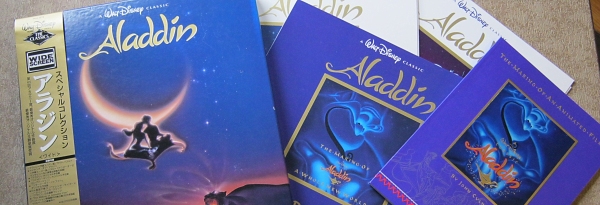
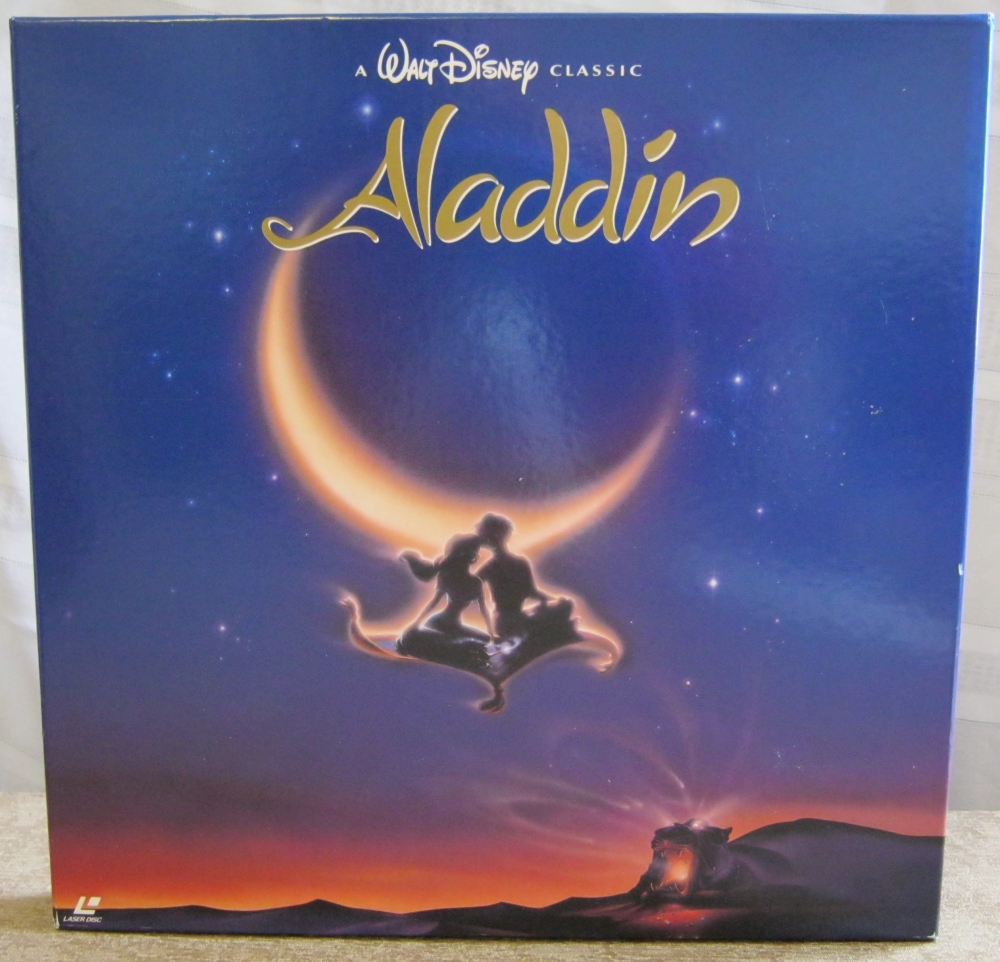
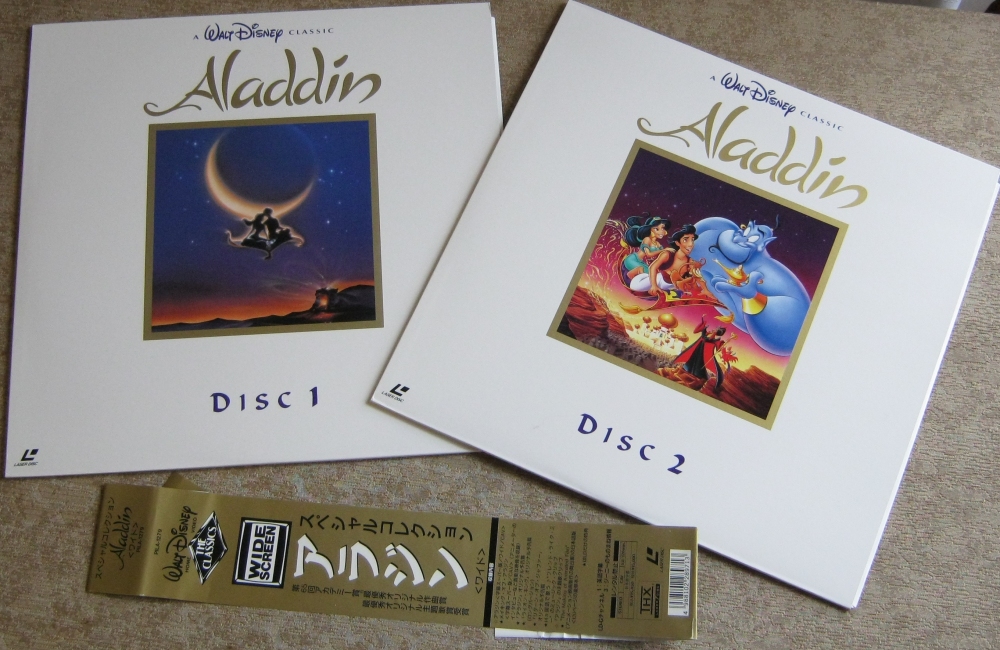
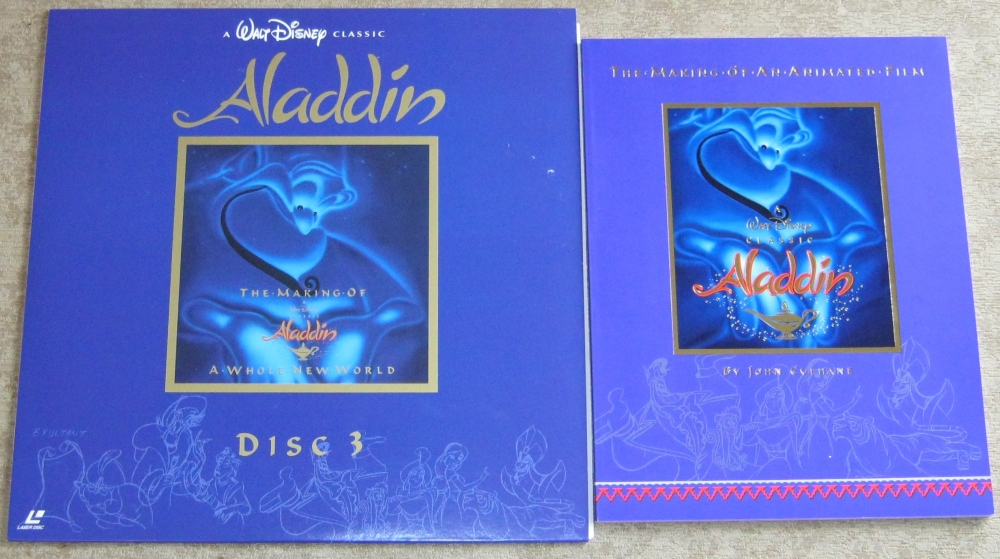
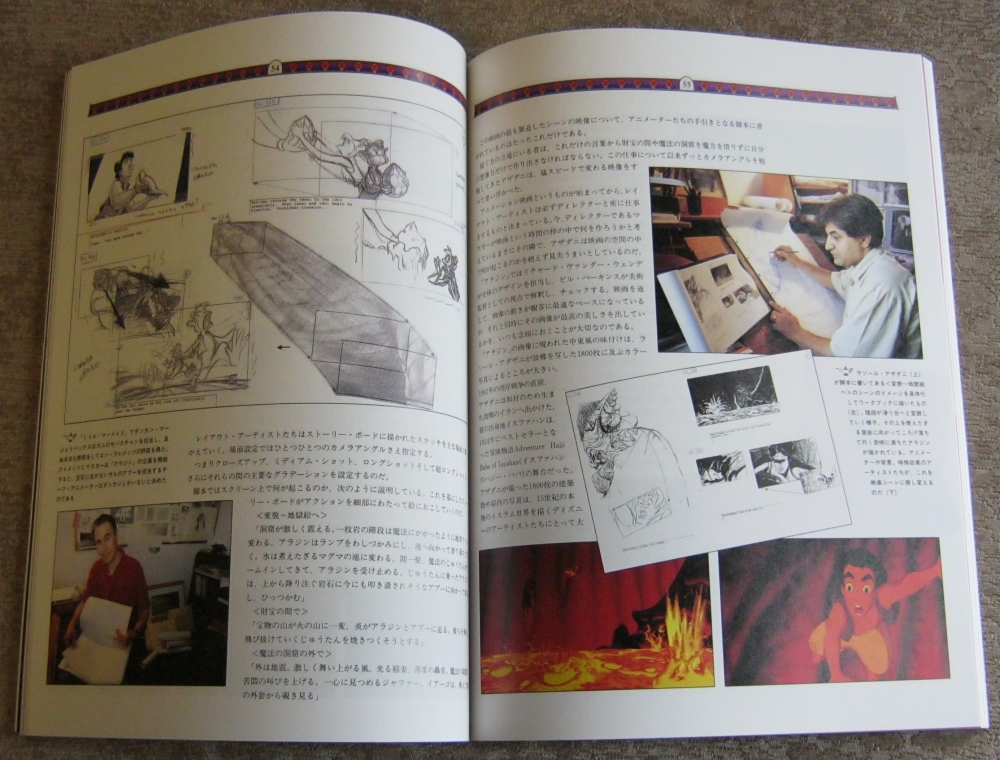
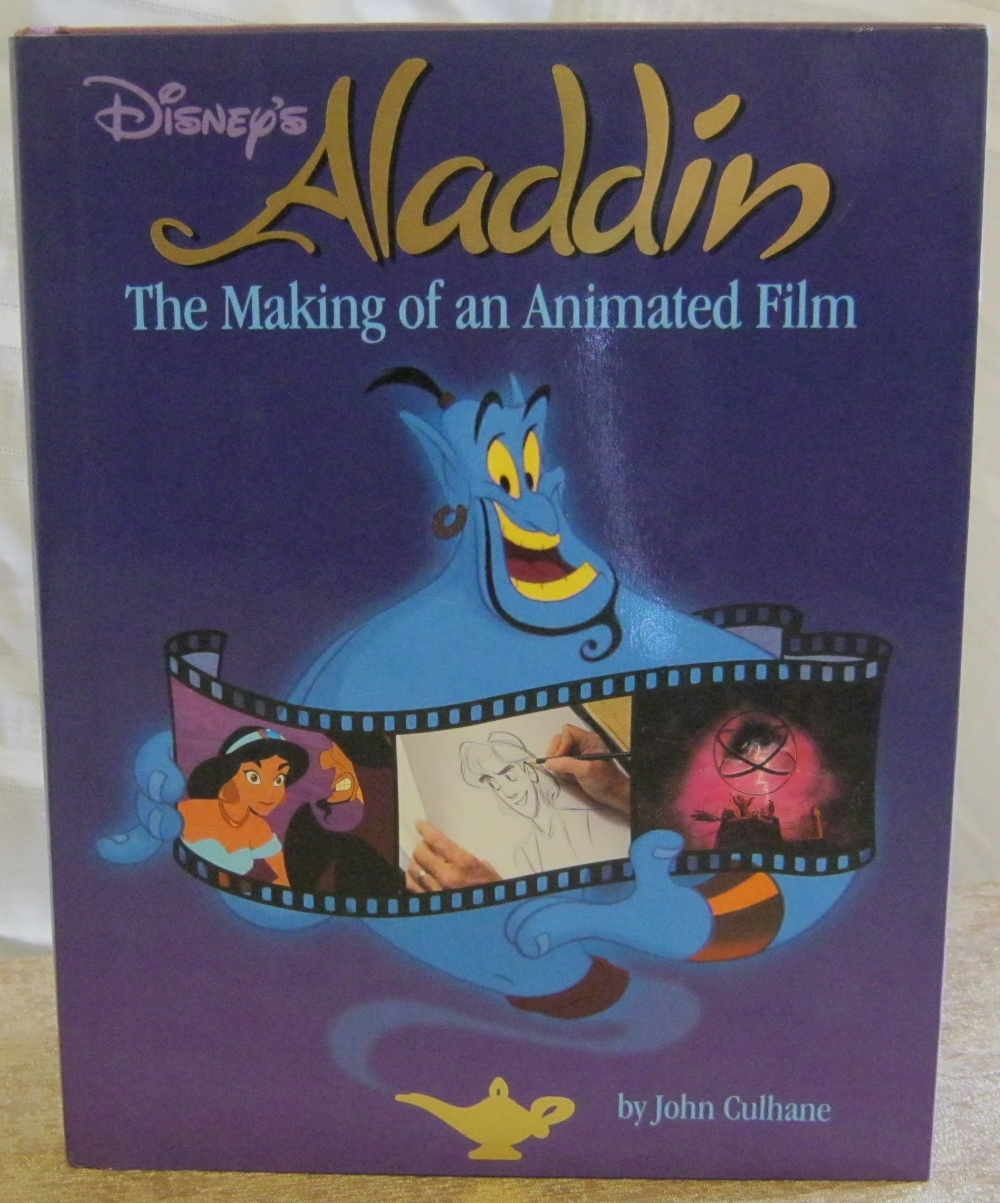
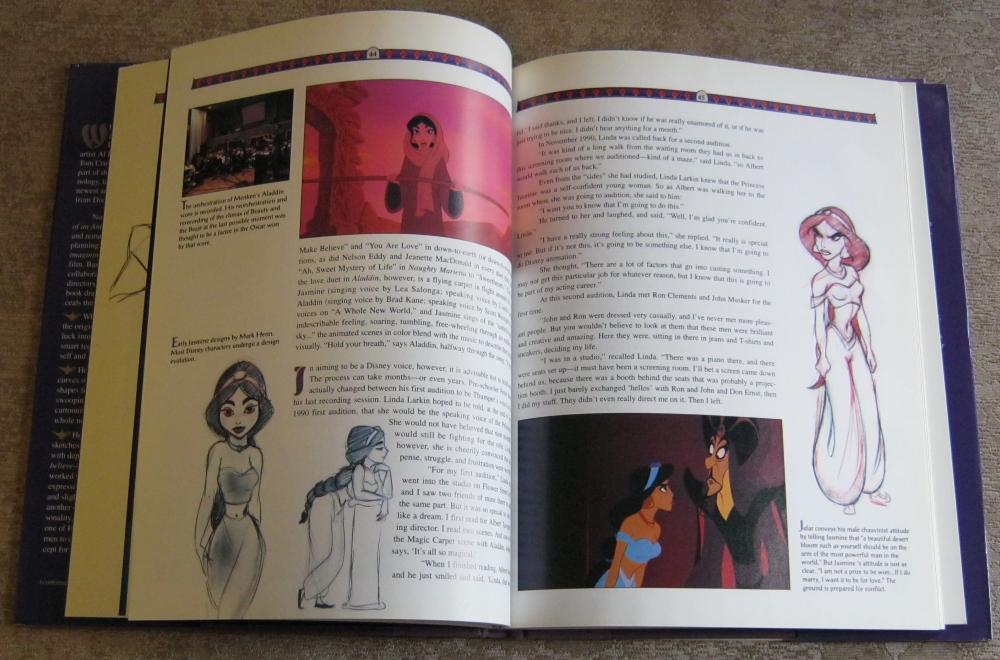
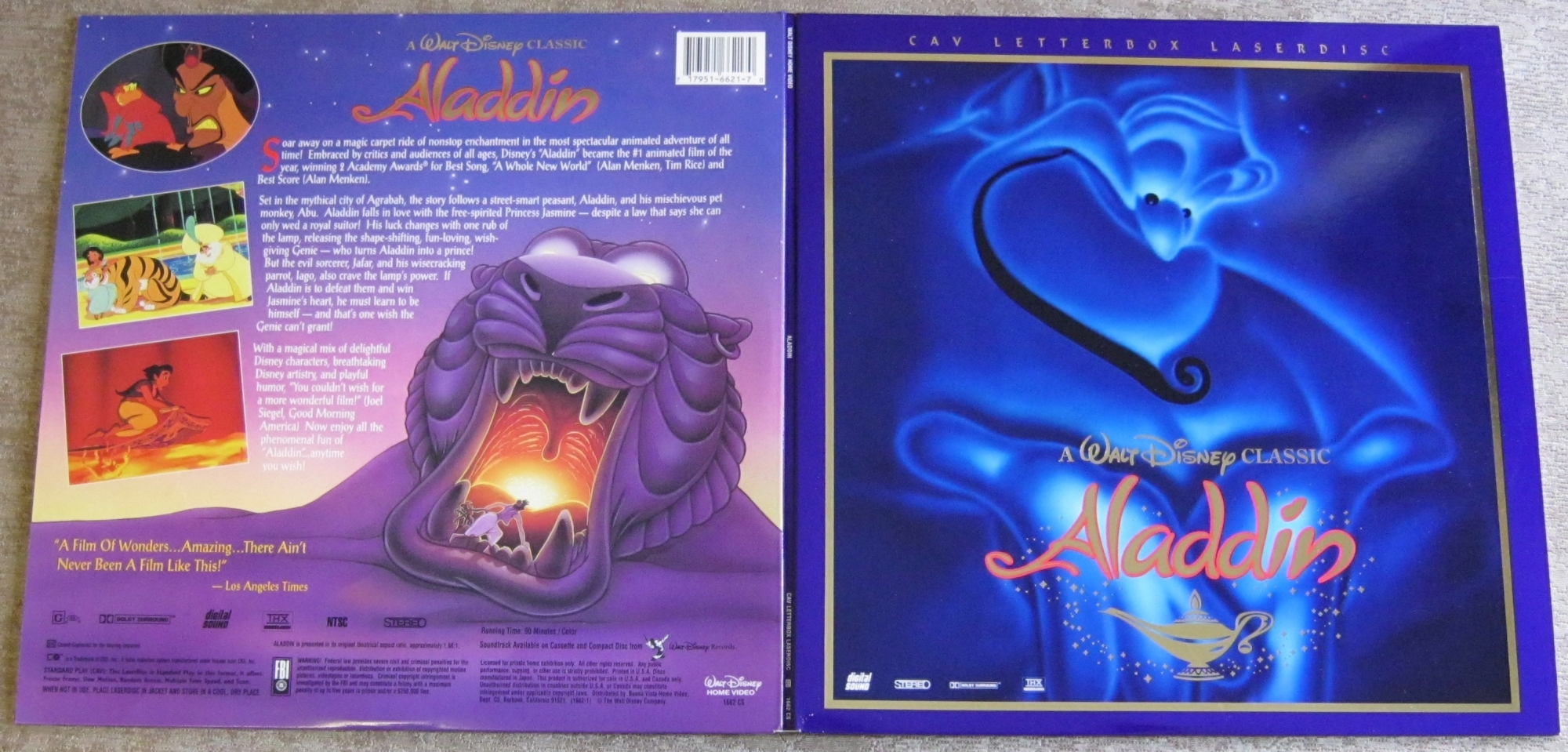
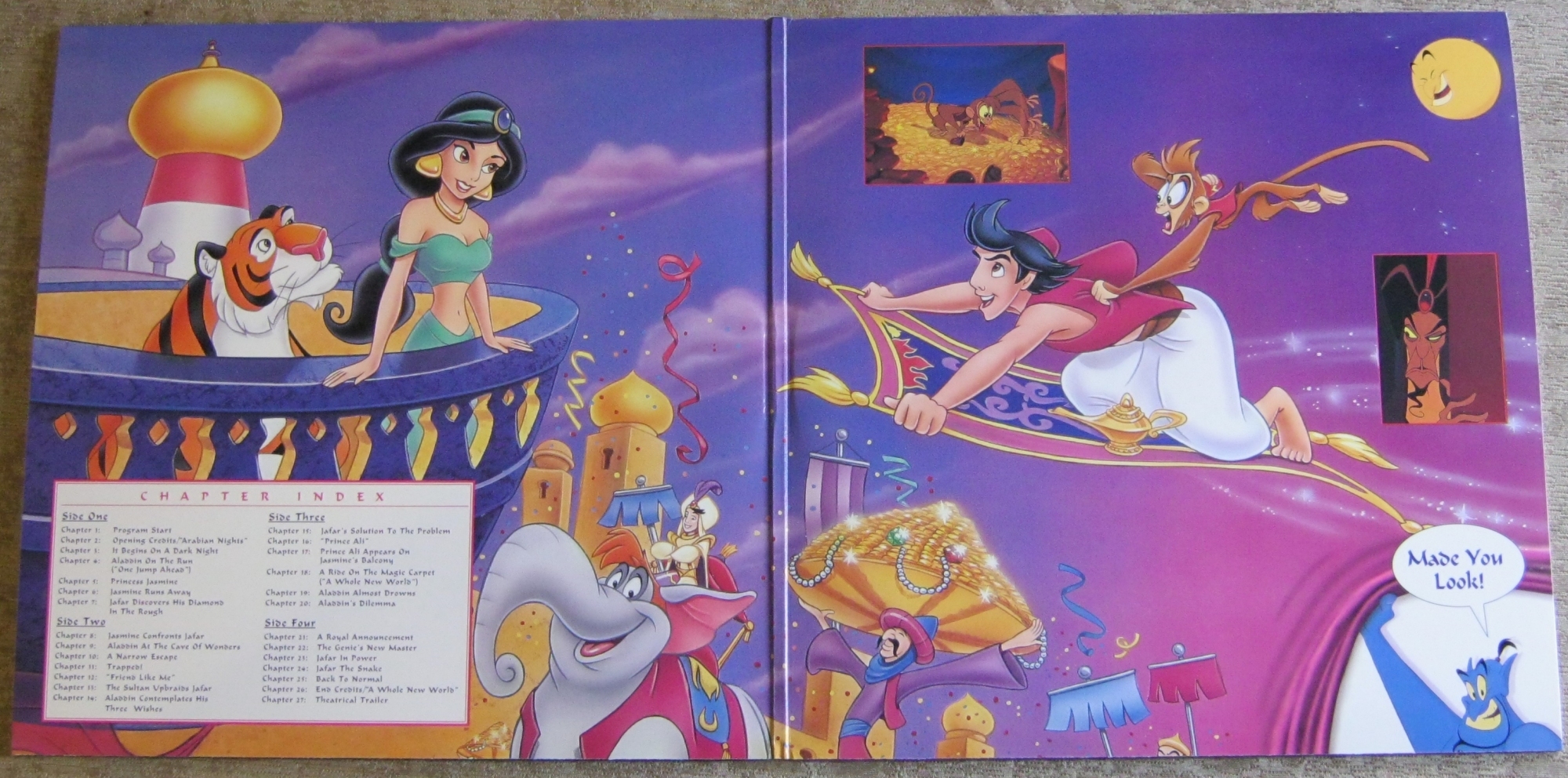
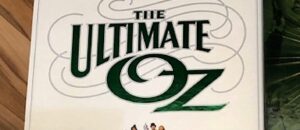
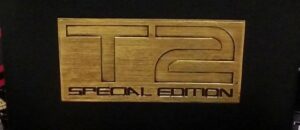
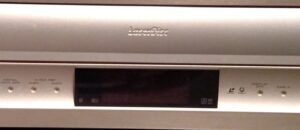
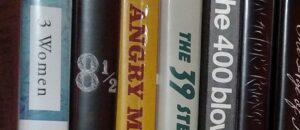
William Henley
I have the American CAV of this. I actually prefer the laserdisc over the DVD. I am sure you are aware of this, but as laserdiscs are analogue encodings, a good, high-quality transfer on a laserdisc has the potential of looking better than the DVD. I find this especially true with 4×3 cartoons, and actually prefer my Disney Laserdiscs over the same DVDs (even though Laserdiscs are 4×3 letterbox instead of anamophic like DVDs are).
Fantasia, on the other hand, hands down looked better on Laserdisc than it did on DVD, and really only retired the Laserdiscs after I got it on Blu-Ray. The CAV collectors edition of Fantasia had four discs in it, but they are just in the plastic sleeves. The reason for four discs for a 90 minute long movie was that they did not want to put side-breaks in the middle of a song, so you have some weird things, such as The Sorcerror’s Apprentace, which is only like 8 minutes long, on a side all to itself. I still keep it on display mainly as a conversation piece. I actually had some friends over a couple of days ago, and handed them the set, asked them to go through the box, and saw their eyes pop when they saw the discs! (“What the heck are these things?”)
Disney’s CAV Laserdisc releases were just absolutely fantastic! The video transfers are amazing, and if you can find a boxed set, Disney doesn’t disappoint!
William Henley
Sorry, Fantasia is 3 discs, or six sides. Sill extreme for a 90 minute movie. Because I am lazy, I am just going to post to pictures on Amazon: http://www.amazon.com/Walt-Disneys-Masterpiece-Fantasia-Laserdisc/dp/B000XZXR1Q
William Henley
DANG IT, its 120 minutes long! I really need to stop posting before I do my research!
William Henley
Here is a video of the unboxing of Fantasia that I found on YouTube. You may want to mute the sound though, whoever filmed this was sick at the time and sniffles through like the entire video.
http://youtu.be/7tyhZoE5rsg?t=3m56s
Josh Zyber
AuthorEven as a longtime Laserdisc collector, I have to admit that there’s no advantage to an analog encoding over a digital one. In addition to the lower resolution, Aladdin in particular suffered some severe chroma noise issues on LD. Reds and blues are a mess on that disc, which was very surprising at the time for a THX-approved title.
One advantage that Laserdisc does have over DVD and Blu-ray, however, is that CAV format discs allow true frame-by-frame forward and backward still-stepping and variable speed touch-control slo-mo, which can be useful if you wish to analyze the animation closely. That’s a feature I have sorely missed on digital formats.
William Henley
Hence why I said it has the POTENTIAL of looking better. Fantasia, Pocahontas, and Oh My Goddess looked better on Laserdisc than the DVDs. Disney’s Hercules looked worse, as does several of the other movies I have. Jurassic Park looked better than the DVD I had, but I know Jurassic Park had a few different DVD releases. Basically, a good laserdisc will look better than some of the early DVD releases, but once studios got their acts together, the DVDs tend to look better.
Most of the Laserdiscs I have are either of movies that were never released on DVD, have some type of collectors set, or movies that had problematic DVD releases. I do have a few movies on laserdisc that I simply have because I picked them up in the bargain bins at the store. I still pick up laserdiscs when I find them for sale for under $5. My player actually gets quite a bit of use, and I will probably need to replace it before too long with a higher-end player.
Josh Zyber
AuthorThe word “potential” implies to me that there’s something inherently better about the format, which I don’t think is the case here. Really, the only time a Laserdisc will have better picture quality than a DVD is if the DVD happens to be particularly bad.
True, a lot of the early-generation DVDs were terrible. It took the studios a few years to figure out digital compression. Some of those early DVDs are just ghastly if you look at them now.
So, yes, there are cases where Laserdiscs look better than DVD. But I wouldn’t chalk that up to a benefit of the analog encoding, so much as incompetence when it came to those specific DVDs.
William Henley
Well, laserdisc offers 425 lines of resolution, and DVD offers 480. The issue lies in digital compression itself. First, there is an issue with color. I am trying to find a link, but Google is failing me tonight. But, in a nutshell, DVD can only display somewhere in the neighborhood of 64,000 colors. I am thinking that the NTSC spectrum allows for significantly more colors (not as many as ATSC, but still more than DVD). Laserdisc, being analogue, should allow for more colors than DVD. You then have issues with stuff such as digital artifacts, shades of black issues, and other stuff that you just do not have on Laserdisc. So, even though the resolution is roughly 50 lines lower than DVD, and doesn’t support anamorphic widescreen, your picture quality on a Laserdisc has the potential (with a good transfer) of looking better than a DVD.
EM
I should think NTSC’s color spectrum would be infinite—it’s Never Twice the Same Color!
William Henley
:-p Of course, you could argue that with just about anything, as, even in digital, different displays display color slightly differently, and even properly calibrated sets will be slightly off from each other.
The color spectrum of NTSC is dictated by the bandwidth. PAL has a slightly different color spectrum (I think it can actually display more colors, as it has a higher bandwidth). There is a writeup here, but its a bit technical, and a bit beyond my grasps.
http://en.wikipedia.org/wiki/PAL#Colour_encoding
Josh Zyber
AuthorWilliam, you’re forgetting that Laserdiscs are encoded in very cruddy, limited bandwidth Composite format. The Component Video color on DVD is much richer and more precise. Also, although Laserdiscs may be encoded as analog, all titles since the early ’90s (when the format started to get decent quality) were digitally mastered. So any theoretical color limitation would be baked into the master before conversion back to analog anyway.
Yes, DVDs have some digital artifacts that you won’t find on LD, but LDs suffer from analog issues like chroma noise, crosstalk, dot crawl, dropouts and other issues that you’ll almost never see on DVD (except from cheapo discs sourced from old Laserdisc masters). Not to mention that almost all Laserdisc players have an unfixable white smear artifact on CLV discs that no one was ever able to determine the source of. These are not just rare problems on a select few badly-mastered titles, but are prevalent format-wide.
I collected hundreds of Laserdiscs over many years, and still have a great emotional affection for the format, but there’s no sense trying to romanticize it as better than it really ever was. LD was the best video format of its day, but times move on, and our standards have risen significantly since then.
The very best Laserdisc ever mastered, played back on the very best Laserdisc player ever made, may pass for the quality of a decent, competently-mastered non-anamorphic DVD on a good day. But that’s as good as it gets. Very few discs or players meet that standard.
William Henley
Hence again why I used the word “POTENTIAL”. For the most part, the majority of the DVDs I have look better than laserdiscs. The few laserdiscs that do look better than the DVDs could be marked up to bad transfers. Also, if you are hooking up DVD via HDMI or component cables, its going to look significantly better than laserdiscs over RF, Composite or SVideo.
Once again, laserdiscs have the “POTENTIAL” to look better, but with the exception of a few discs on the best of players, this is hardly ever the case.
Also, SOME early DVDs were mastered from Laserdisc masters, and even some into the 2000s (one that comes to mind from the 2000s is the Star Wars Theatrical Cuts). That being said, the DVDs looked better than the same laserdisc did on my player, which is a cheapy one.
This is like saying vynals have the POTENTIAL to sound better than CDs. While this is true, it is hardly ever the case. A vynal in pristine condition, on a turn table that costs several thousand dollars, may technically be better than the CD, but few will hear it, and for the past 30 or so years, most studio recordings are digitally mastered anyways.
Just because something has the potential of being better doesn’t mean that it is.
William Henley
Also, “Digital Master” on video does not mean the same thing as DVD, and “Digital Master” on audio does not mean the same thing as CD. I would assume that digital masters, even in the 90s, were encoded at 24 bit or 32 bit, both of which have many more colors than the DVD spec allows.
Josh Zyber
AuthorSorry, William, but a more apt analogy would be to say that a McDonald’s hamburger has the “potential” to be better than filet mignon… if the filet mignon is three weeks old and seared to a crisp by the cook. Sure, it could happen, but that’s not due to any inherent advantage of the McDonald’s burger.
A VHS tape also has the potential to look better than a DVD, if the DVD is particularly horrid. Admittedly, I’ve seen a few like that (the Canadian ‘Anne of Green Gables’ DVDs come to mind), but I wouldn’t trumpet that as a success of VHS technology. See what I mean?
William Henley
I completely understand where you are coming from. And I am not trying to over-romanticize laserdiscs. I just want you to understand what I am saying – there are SOME discs out there where the laserdisc looks better than the movie did on DVD. In my opinion, Aladdin is one of those.
Brian H
I have found that the last four David Fincher movies that I have seen, Zodiac, Ben Button, Social Network, and the Girl with the Dragon Tattoo look great, but at the same time look very artificial. I suspect that it is digital filming, and I wish that Fincher would use some 1990’s film stock just for variety. I’d be interested if he would film every other movie that way.
Anyways, I’m just wondering is it the aesthetic look of hand drawn disney animation on analogue ld that is your preference?
Jonathan Doan
I’ve got the American release Laserdisc. While I’ve never watched it in that format and don’t even have a Laserdisc player, I still love the packaging. Plus, it cost me all of a dollar or thereabouts, so I don’t mind owning it.
Javier
I have Aliens and Last of the Mohicans on laserdisc. I was too young when they came out but I convinced my dad to let me keep those two because they are two of my favorite movies. I also have the Neon Genesis Evangelion ld’s which cost me like $1,000.
Josh Zyber
AuthorWhich Evangelion LDs do you have? I have all of the series episodes imported from Japan on 14 discs grouped in three box sets, a Symphonic Orchestra Live music disc, and that massive, gorgeous Death & Rebirth/End of Evangelion box set. The latter may feature in one of these Unboxed posts in the future, but it has a million things inside that will need to be photographed individually.
Not a damn one of these has English subtitles. 🙂
Shannon Nutt
I have both the Alien and Aliens sets on Laserdisc…they’re both very nice. Believe it or not, War of the Roses is really nice on laserdisc as well. In fact, I think FOX released some outstanding titles on LD.
Andrew Parr
DO I even want to ask how much this thing cost you?
Josh Zyber
AuthorThe Aladdin box? It’s been so long that I honestly don’t remember. As I recall, it was expensive at the time but not obscenely so. I want to say around $100.
There’s actually one on eBay right now selling for just over $50, but the seller’s in Japan and shipping will more than double that. Be warned that the same seller has a few listings for much lower prices with photos that look similar to this one, but that are not the box set. The box set is spine reference number PILA-1279. The other items are PILA-1277, which is the Japanse movie-only edition. The seller’s description does not make this very clear, unfortunately. Nor does he provide much of any information about the condition.
Julian
I also have the American CAV-edition, for which I paid a grand sum of $3 (in fact, I bought most of my LD’s for a price around $0,50-$5, because I only started collecting in 2005). The Disney LaserDiscs have cover art that is a lot more beautiful compared to the DVDs and the Blu-rays, and the American “Aladdin” remains a personal favourite of mine. I also have the 1-disc CLV Japanese (which includes two dubbed trailers, quite funny, but nothing else) and am looking forward to purchase the full box set Josh described here whenever the price is right.
Javier
I have the 14 discs in three box sets as well and the free x disc that you got by sending in some coupons that came in all the other discs. I don’t have a ld so I haven’t watched them but I feel good having them
Javier
I want the death rebirth set but I always forget to look for it. I once found a brand new one for $200 but I was still a student and couldn’t afford it then.